When Should I Aerate My Lawn? The Ultimate Seasonal Guide
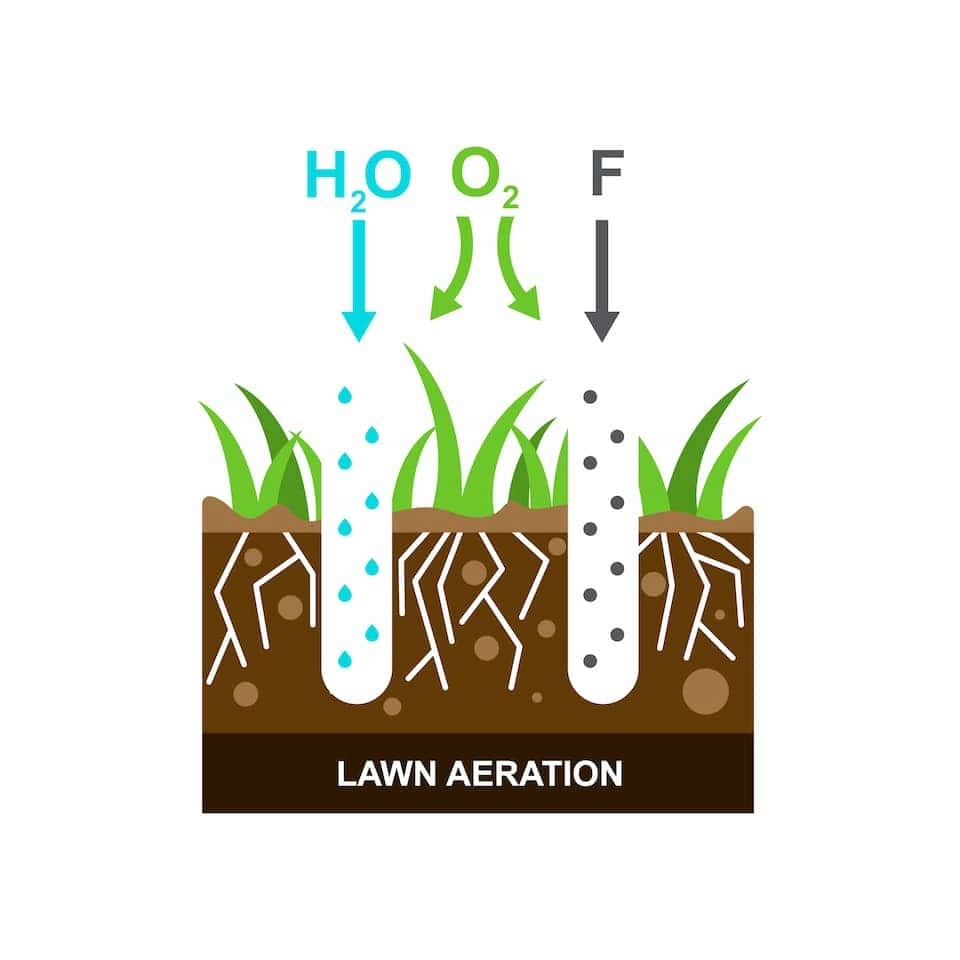
Not sure when to aerate your lawn in Wake Forest and the surrounding areas of North Carolina? Aligning lawn aeration with your grass type and soil conditions turns thin, compacted turf into a thicker, healthier lawn. Our residential lawn care experts from Turf TitanZ are sharing the best time to aerate your lawn and how to spot compaction and thatch so you can start the process of caring for your lawn with confidence.
Table of Contents
What Lawn Aeration Does and Why It Works
Aeration helps air, water and essential nutrients reach the lawn’s soil and roots. By relieving soil compaction and thinning a dense thatch layer, the aeration process jump-starts healthier growth across the entire lawn.
Core Aeration
Core aeration removes small plugs from the soil surface to alleviate compaction, improve infiltration, and stimulate deeper roots. It’s the most reliable way to reduce compaction in heavy clay soil common around Wake Forest.
Liquid aeration
Liquid aeration can loosen particle bonds and improve percolation, especially on sandy soil or between core aerations. It’s a helpful supplement; for compacted soil, core aeration remains the primary solution.
Signs It’s Time to Aerate Your Lawn
These quick checks help many homeowners decide the right time to aerate your lawn. If you see several at once, schedule aeration services soon:
- Water puddles or runs off the soil surface instead of soaking in
- Thinning grass, bare spots, or areas with dead grass despite feeding
- Thatch buildup thicker than ½ inch forming a spongy thatch layer
- High traffic from kids, pets, outdoor activities, or heavy equipment
- Screwdriver test: a screwdriver won’t easily penetrate the lawn’s soil
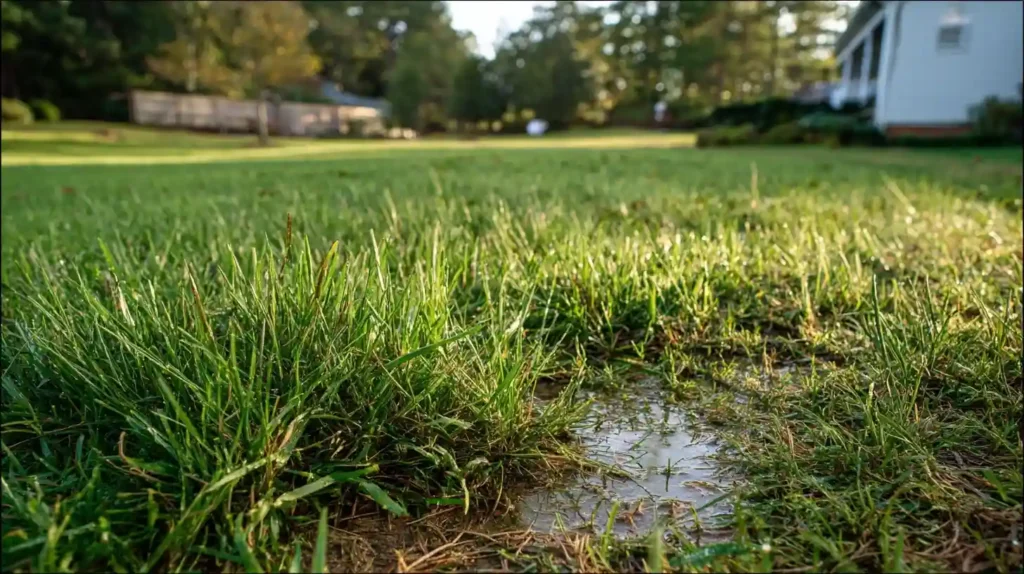
When to Aerate Your Lawn by Grass Type
In Wake Forest, Raleigh, and the nearby areas of the Triangle, timing lawn aeration depends on whether you grow cool season or warm season grasses. Use the windows below so turf is actively growing and able to recover fast after aeration.
Cool Season Grasses
Cool season grasses in this region include tall fescue, Kentucky bluegrass, perennial ryegrass, and shade-tolerant fine fescues. Aerate when these grasses are actively growing and weather favors root repair.
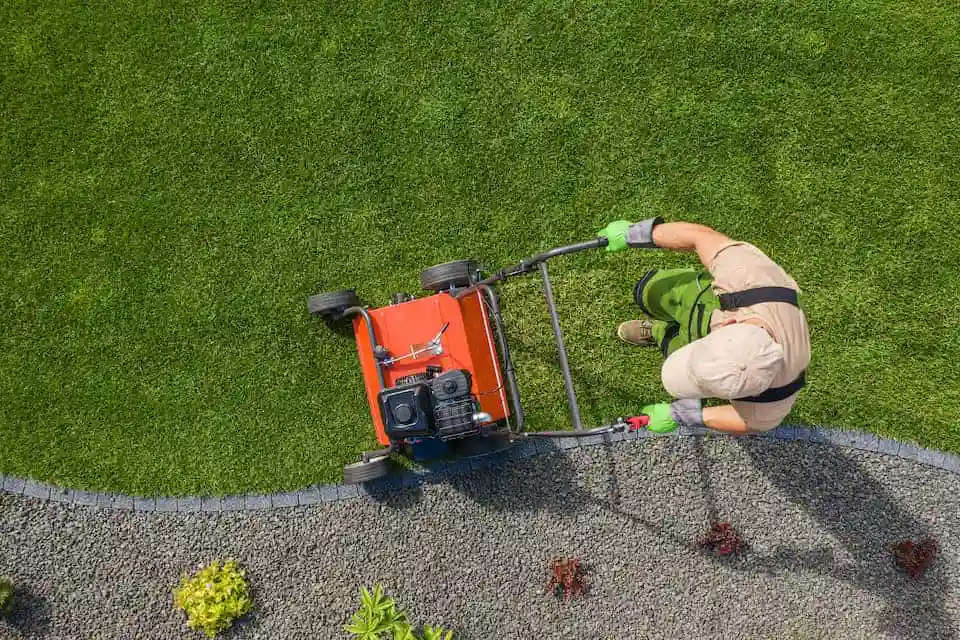
- Best time to aerate: Early fall (primary window)
- Backup window: Early spring if soil compaction is severe and you’re not spring-overseeding
- Why it works: Cooler nights, steady moisture, and vigorous root system activity help aeration holes close quickly and thicken turf.
Warm Season Grasses
For warm season grasses in North Carolina the main species are bermuda grass, zoysia grass, and centipede; St. Augustine is less common locally but may appear in warmer microclimates. Schedule aeration after green-up so the turf can recover fast.
- Best time to aerate: Late spring to early summer (post green-up)
- Why it works: Warm soil accelerates healing so small holes fill in, grass roots expand, and the lawn rebounds before peak summer stress.
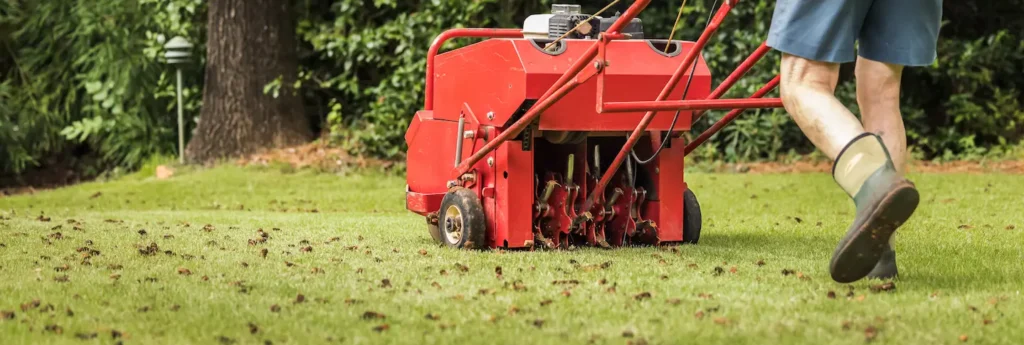
When to Aerate Your Lawn by Season
Each season can work for lawn aeration—if your grass is actively growing. Use the guidance below to protect roots and maximize recovery.
Spring aeration
Spring aeration can relieve winter compaction and prep cool season lawns for growth. For warm season lawns, aim for late spring as bermuda grass and zoysia grass wake up.
Early summer
Early summer suits a warm season lawn best. Aeration helps bermuda grass and zoysia grass expand laterally, fill small holes, and grow thick before peak heat arrives.
Fall aeration
Fall aeration is ideal for cool season grasses. Pairing fall aeration with grass seed thickens turf, improves root depth, and sets you up for a healthy lawn next spring.
Winter aeration
Winter aeration is uncommon. Only consider it during mild winters when the ground isn’t frozen and compaction is extreme.
Lawn Aeration Timing by Soil Type
Wake Forest lots range from heavy clay soil to sandy soil. Your soil type influences how often you should be aerating lawns.
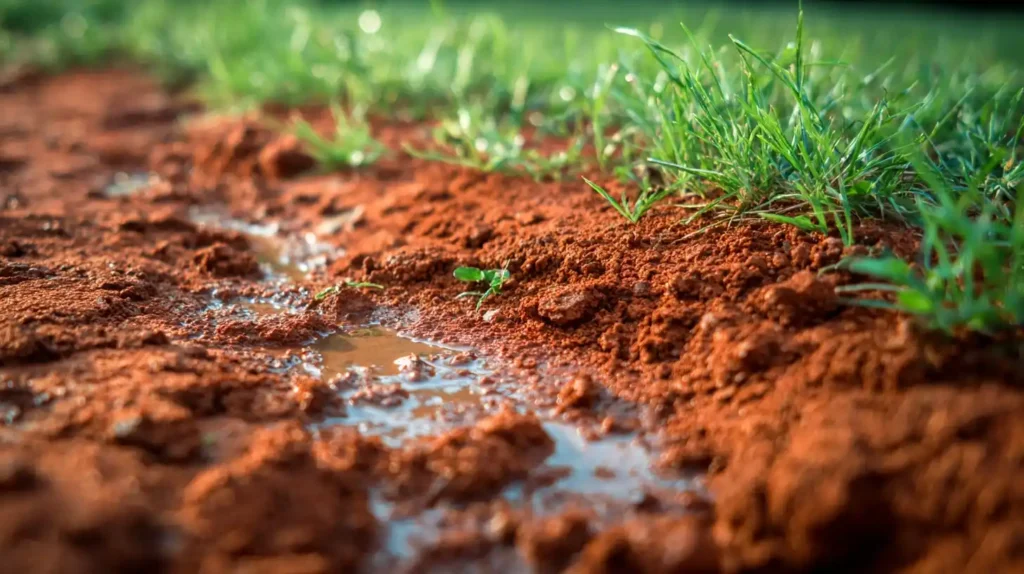
Clay Soil and Heavy Clay Soil
Clay compacts easily. Plan core aeration once per year (sometimes twice for problem areas) to reduce compaction, improve drainage, and strengthen grass roots.
Sandy Soil
Sandy soil compacts less but dries faster. Annual or as-needed aeration is usually enough; liquid aeration can be a light-touch option mid-season.
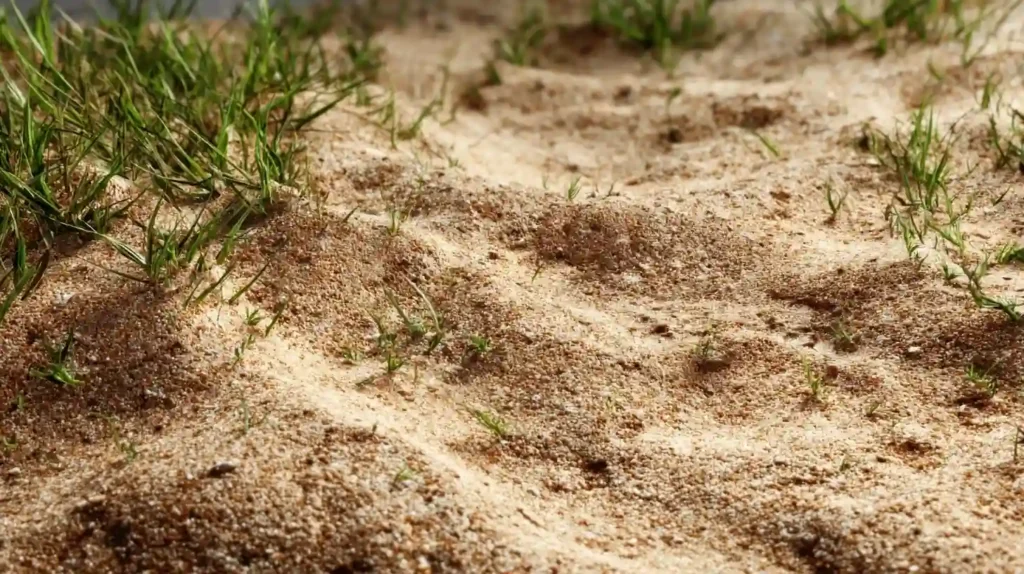

New Grass (Seed and Sod)
Delay aeration until new grass is well established with a firm root system. For seed, wait until after the first few mowings; for sod grass lawns, confirm strong rooting before scheduling.
How to Prep Your Lawn for Aeration
A little preparation protects your turf and equipment and helps the aeration process work deeper and more evenly. Aim to start with slightly moist soil, clear targets, and a recently mowed surface so the core aerator can pull clean, consistent plugs.
- Water lightly the day before: Slightly damp soil lets the tines extract deeper cores; avoid soaking the lawn or creating muddy conditions.
- Mark sprinkler heads and shallow utilities: Flag sprinkler heads, valve boxes, invisible dog fences, landscape lighting, and any shallow lines to prevent damage.
- Mow and manage weeds (timing matters): Mow your lawn a notch lower than usual for better tine penetration, and avoid same-day weed control—schedule herbicides a few days away from aeration.
- Clear debris from the soil surface: Remove sticks, leaves, and toys so tines reach soil without obstruction.
- Plan your pattern: Aerate in overlapping passes (north–south, then east–west) in compacted areas for more thorough relief.
Lawn Aeration After-Care Tips
Post-aeration care moves air, water, and essential nutrients into the root zone and speeds recovery so turf can fill in quickly. Focus on seed-to-soil contact, light nutrition, and steady moisture while the lawn heals.
- Overseed and feed (cool season lawns): After fall aeration, apply grass seed and a starter fertilizer based on your soil test to thicken thin areas and improve the entire lawn.
- Topdress with organic matter: A light compost topdressing helps break down the thatch layer and improves structure—especially helpful on clay soil.
- Water and limit traffic: Keep the upper profile evenly moist for 1–2 weeks and reduce foot traffic until cores break down and small holes begin closing.
- Resume mowing on schedule: Mow when the lawn reaches normal height; sharp blades reduce stress on new growth.
- Time other services wisely: Schedule pest control and weed control services outside the immediate post-aeration window unless otherwise advised by your lawn service.
- Don’t rush to remove plugs: Let plugs dry and crumble naturally. They recycle nutrients, help decompose thatch, and improve the lawn’s soil over time.
Lawn Aeration FAQs
What’s the best time to aerate my Wake Forest lawn?
Early fall for cool season grasses; late spring to early summer for warm season grasses. Target periods when turf is actively growing.
Will core aeration fix a weed problem?
Aeration improves density so grass can outcompete weeds, but it isn’t weed control by itself. Pair aeration with proper mowing, feeding, and a tailored weed control plan.
Is spring aeration bad for warm season grasses?
No—done at late spring green-up, it’s beneficial. Avoid aeration too early, before bermuda grass or zoysia grass are actively growing.
How often should I aerate my lawn regularly?
Most Wake Forest lawns benefit from once per year. Heavy traffic, clay soil, or compacted areas may justify a second pass.
Will aeration damage my sprinkler heads?
Not if you mark sprinkler heads and valve boxes beforehand. Always flag irrigation before starting.
Should I remove plugs after core aeration?
Generally no. Let them break down on the soil surface; they return other nutrients and help the thatch layer decompose.
Does liquid aeration really work?
Liquid products can improve soil structure and water movement, but for severe soil compaction, core aeration is still the most effective choice.
Can I aerate newly seeded or sodded areas?
Wait until the root system is established. For seed, aerate in the next appropriate season after several mowings; for sod, confirm good rooting first.
Schedule Professional Aeration and Lawn Care Today
Turf TitanZ provides core aeration, overseeding, fertilization, weed control, and season-smart lawn care tailored to local soils and climates. Our experienced landscapers in NC will evaluate your grass type, soil type, traffic patterns, and other factors, then customize a lawn service plan tailored to your turf’s needs.
Get started today by calling us at (919) 562-0771 or filling out our contact form below to schedule a consultation with a member of our team.
